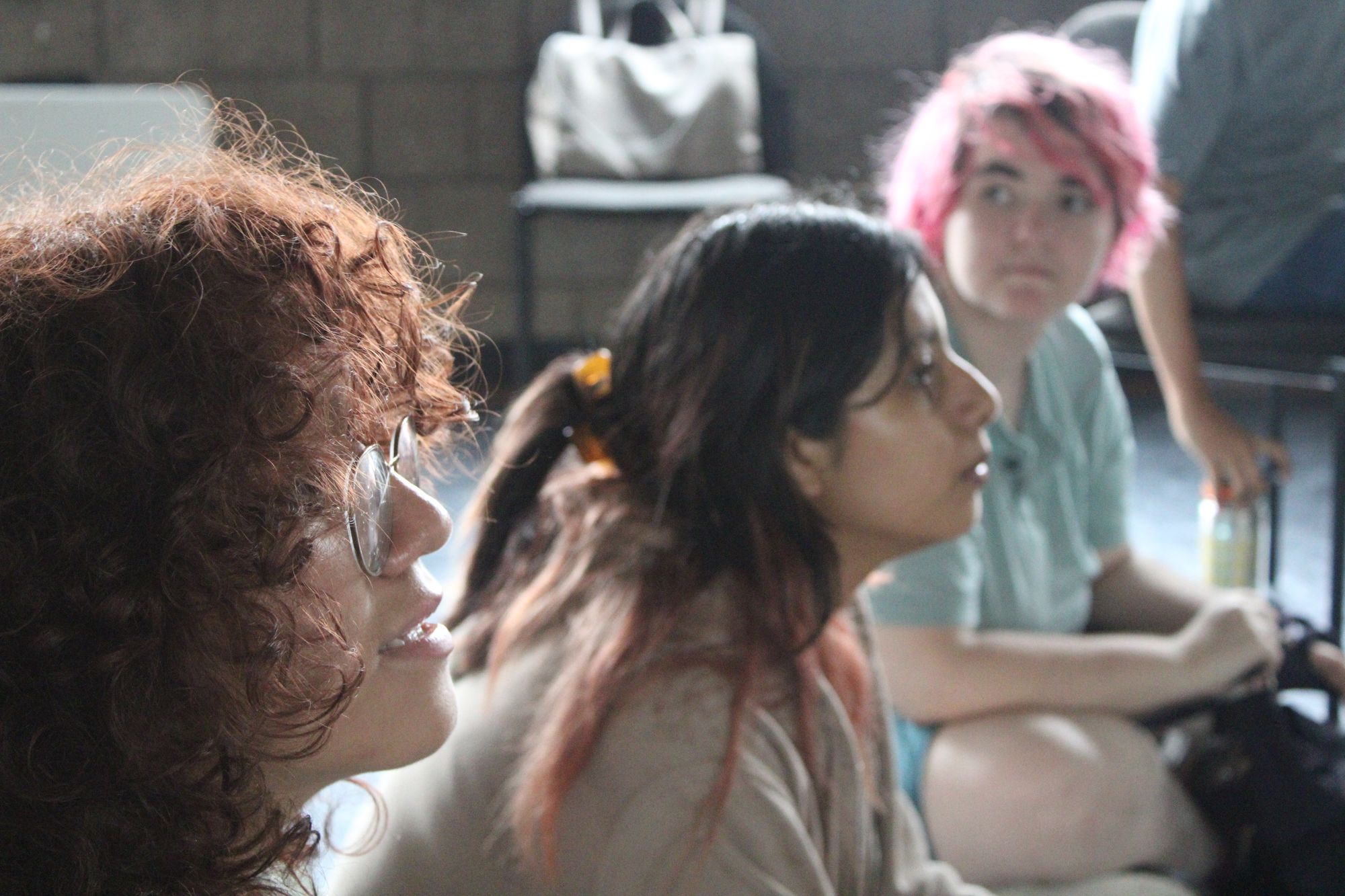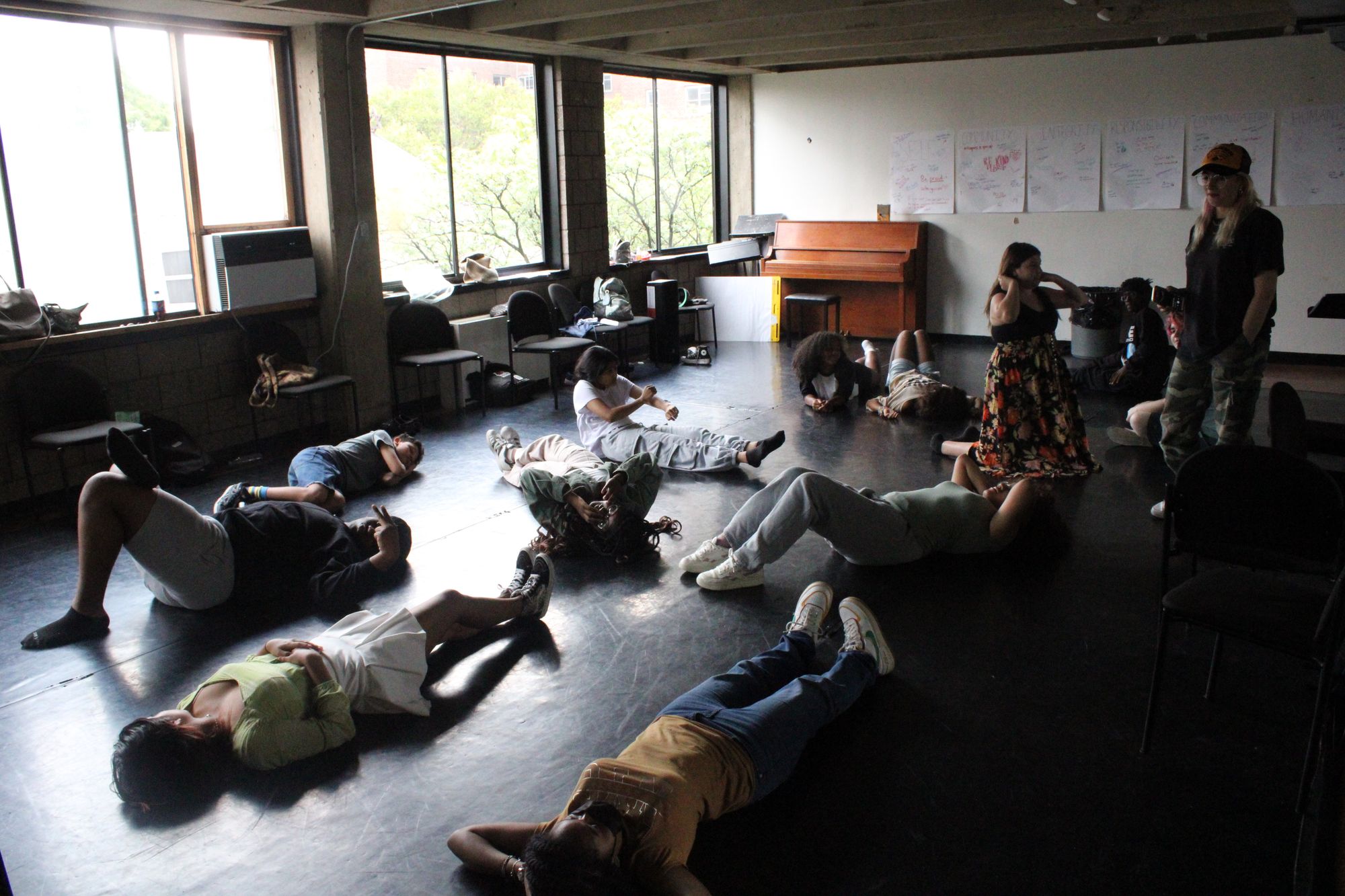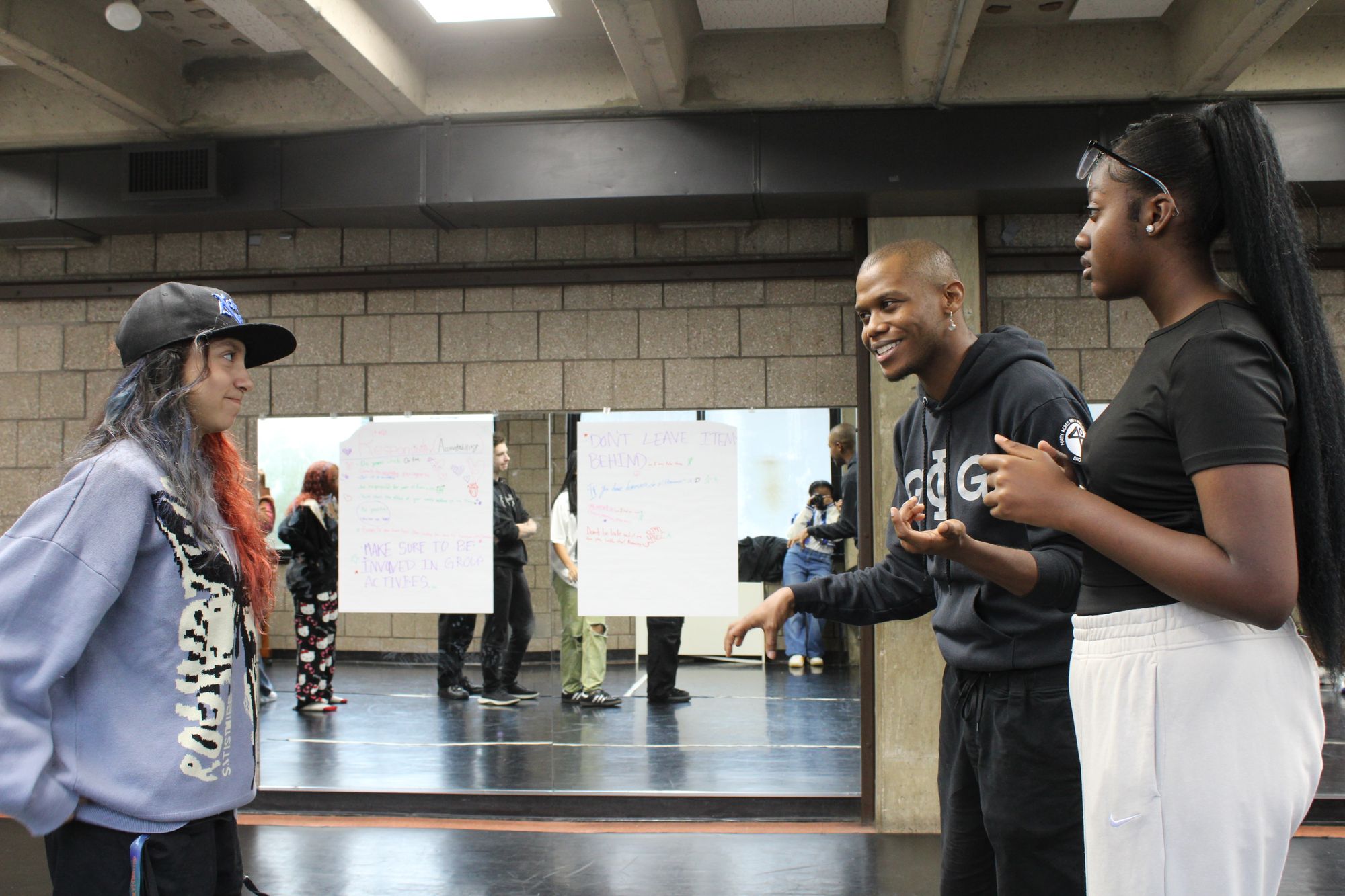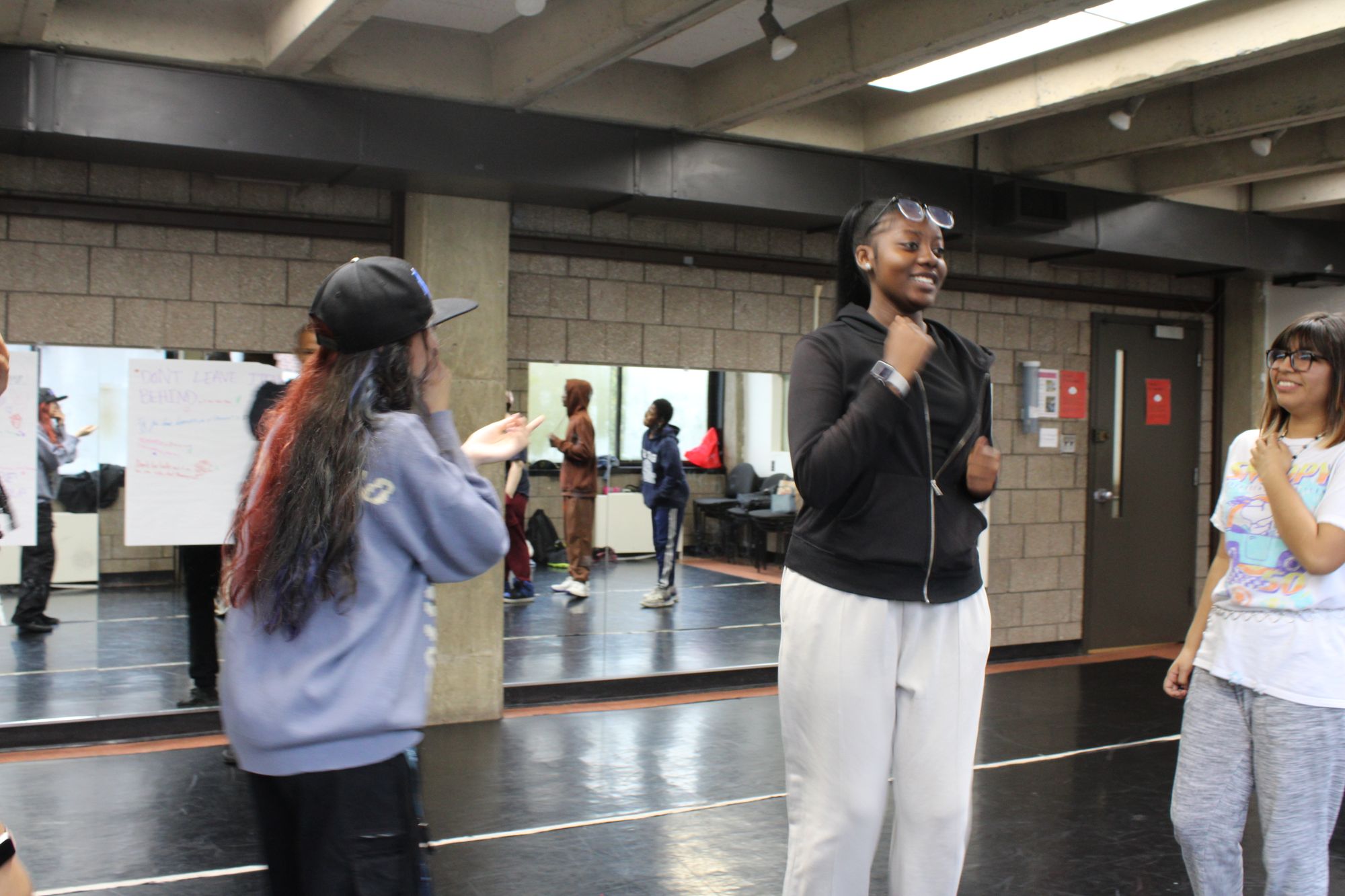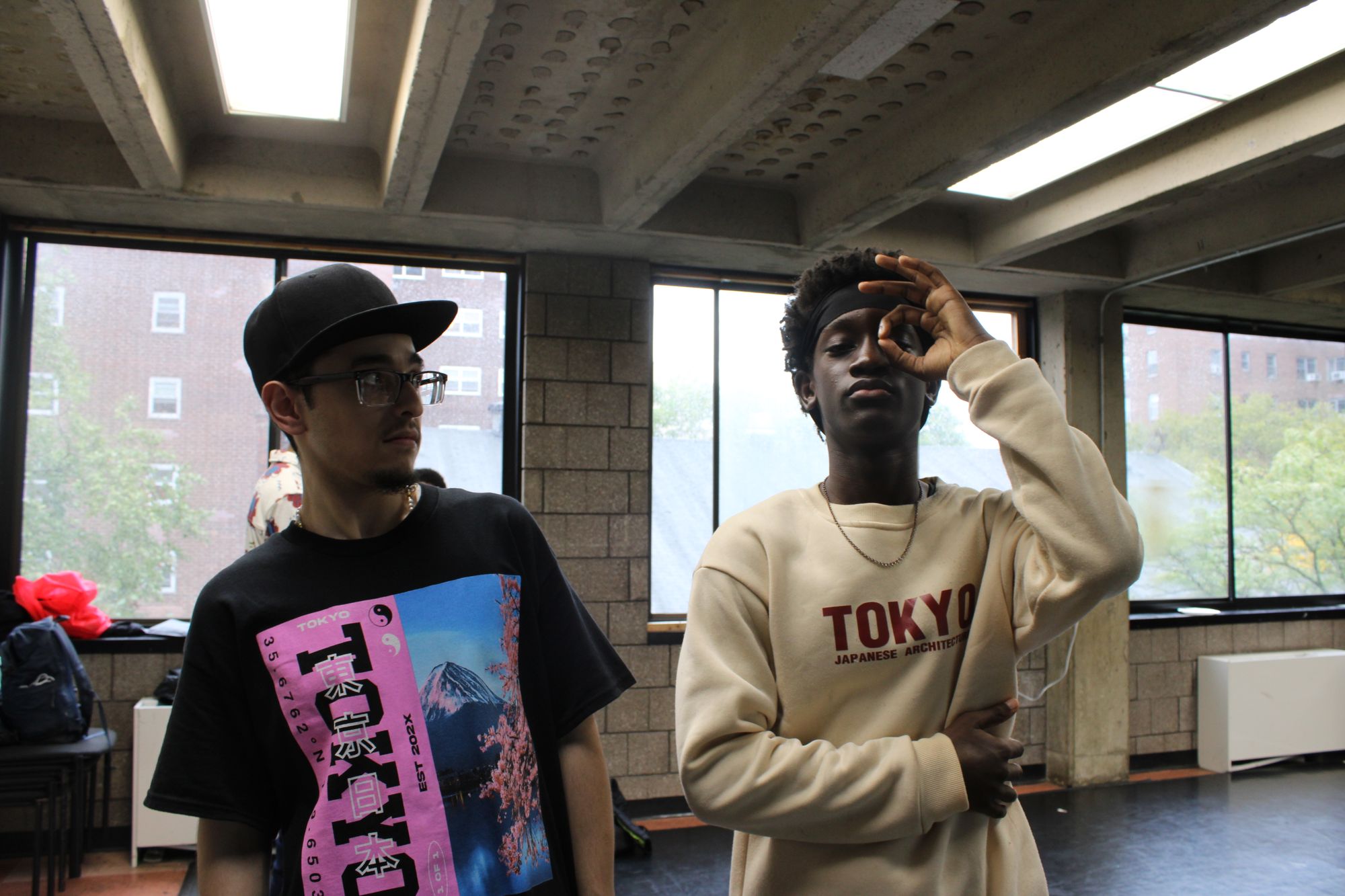Classes
Urban Youth Theater
Ages 13–19
1:30–4:30pm, Saturdays
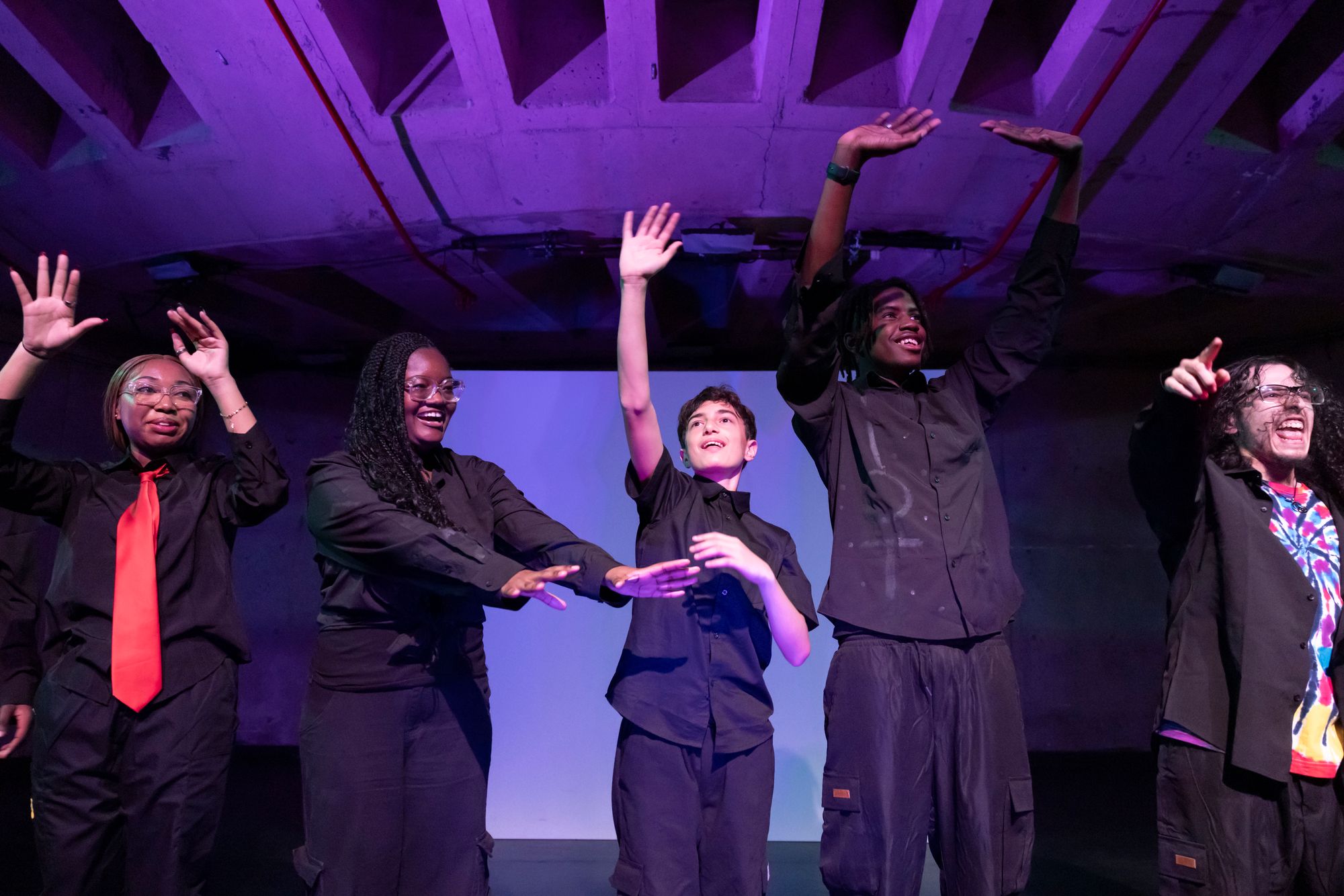
Class Information
Pricing
Free
Instructor
Jonathan Nathaniel Dingle-El
A core program of Abrons Arts Center since the 1990s, Urban Youth Theater (UYT) provides young New Yorkers the opportunity to learn about theater making.
A diverse cohort of teen artists–selected through an audition process–is mentored by a professional theater artist who facilitates a devised theater curriculum that includes workshops ranging from improvisation to script writing. Urban Youth Theater participants are paid a stipend for their completion of the program.
In addition to learning about theater making, UYT participants gain valuable social and professional development skills, all while building community with other like-minded teens.
General Information
Eligibility
Important Dates
About Jonathan Nathaniel Dingle-El
Jonathan Nathaniel Dingle-El utilizes his background as a performer and educator to help the students of UNHS identify material that they feel most passionate about and highlight current events and concepts. He then facilitates students in forming those ideas into a cohesive storyline for the overall production while simultaneously teaching them core principles of acting, performance, and poetry.
As an artist, Jonathan Nathaniel is inspired to create theater that is accessible to inner-city communities of color. As a graduate of the Brooklyn College BFA Acting Program, he has had the pleasure of working with many artists from diverse communities of varying skill sets, who have gone on to found theater companies and various community outreach projects. He has worked with many local organizations such as Abrons Arts Center, The Living Mural, the New York Shakespeare Exchange, as well as The Motor Company NYC, a company whose work focuses on increasing site-responsive theater in local hubs within communities of color. Together, Jonathan Nathaniel and his colleagues work to decolonize theater by bringing it further from the traditional black box and two-thousand seat theaters and situating it within underserved communities in Manhattan, Queens, and Brooklyn.
